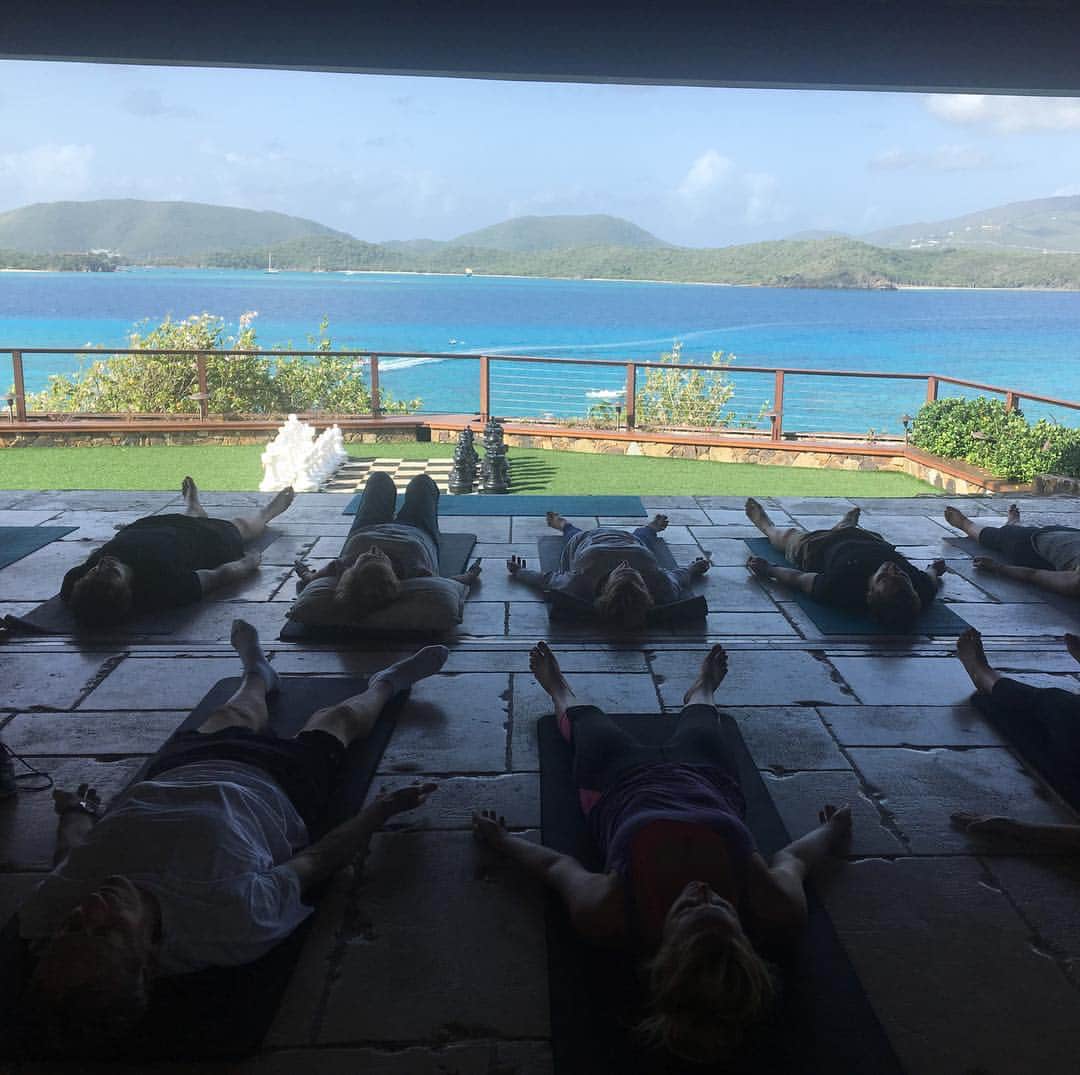I just spent a week in the British Virgin Islands. It was a true pleasure for the senses: warm air, turquoise ocean, tropical fruits, bird song and the calming energy of the tropics. While there I reflected on the idea of what paradise really is…
The Yoga Tradition references paradise as an internal state of peace that is not a result of our external environment but actually lies in our ability to process resentment, let go of suffering, direct our thoughts, and rest in pure joy. This can seem like a tall order, just one of these directives could take a lifetime! Therefore, even if we are in an external paradise it does not mean that we are experiencing paradise within.
The Yoga Tradition lays out a specific path toward this inner state of freedom and peace. The path is systematic and hugely rewarding. However it requires commitment and dedication as we may experience resistance when we inquire into our state of energy, emotion and mind, as old patterns and behaviors arise. Underlying this resistance is inevitably some kind of pain.
We usually take care of physical pain with a painkiller, and try to distract ourselves from emotional pain, or often bury it. As yogis we are asked to inquire into that pain. We take the time to recognize it, examine it, and eventually transcend it. In order to do this, we have to get to the root causes which are connected to our underlying anger, disappointment, attachment, resentment, greed etc.
Any one of these emotions causes a big shift in our physiology, particularly our nervous and endocrine systems. This is how the subtle pains start to manifest in our physical and energetic bodies and create suffering on multiple levels.
The key practices of yoga begin to dissolve this underlying pain and help us to recognize the state beyond them. The path includes the following essential aspects:
- Look at your overall external environment and see how it is impacting your energy, choices and ability to conenct with yourself. Note any particular stressors.
- When you find yourself in a challenging emotional state, take a walk and work through it before reacting to those around you. Once calmer take some time simply watching the breath to help balance the nervous system.
- Do a physical asana practice with conscius breath. This begins to release dullness and congested energy in the body, and opens us to an underlying state of peace that is often elusive in our daily life.
- Be in a regular practice of self inquiry. When anger or frustration arises try to go in toward its root? Where is this tendency coming from? Guaranteed it is not as an result of the immediate circumstances you are in, but because an event has triggered an underlying pain. Look toward the source.
- When you experience subtle pain like depression do some yoga practice that helps to build vitality (corework with a focus on bringing attention to the navel). We want to cultivate the inner strength and vibrancy to overcome the negative tendencies that can seem to overwhelm us.
- Use challenges as opportunities to see where you are holding on to a certain belief or self identity. Be willing to surrender your resistance. Remember it is not the situation itself, but our response to it that matters.
- Another really important and helpful approach to dissolving pain and sorrow is to look at your priorities in life. Where are you acting in ways that are dissipating your energy and focus from your overall goal?
Make a commitment to do everything in your power to cultivate loving, compassionate and kind relationships. Let this be a priority, so that all thoughts, communications and actions are coming from this intention.
The sages and rishis of the Yoga Tradition remind us of the miracle of this human life, and the potential that each and every one of us has to lift ourselves out of suffering into joy and Grace. Daily actions taken with awareness and intention gradually pave the way to our inner paradise.



